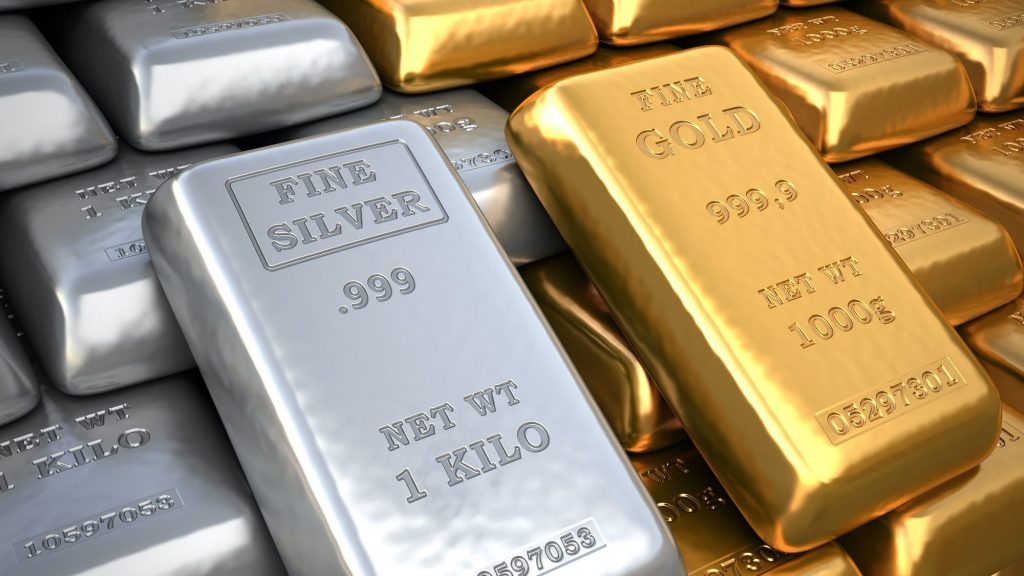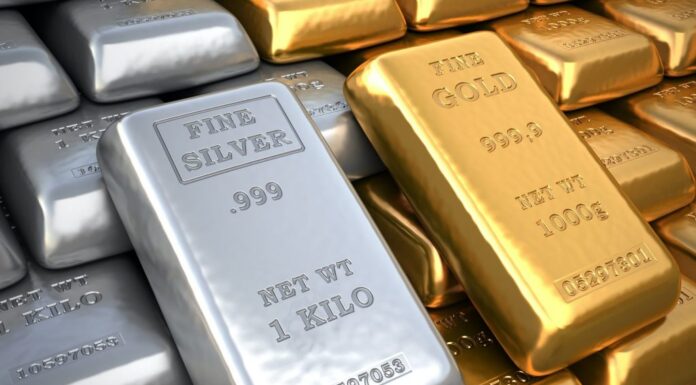
Silver prices climbed to their highest levels since late October, benefiting from the same market forces that have propelled gold to multiple record highs. On Friday, spot silver rose 2% to $33 per ounce, reaching an intraday peak of $33.41. Analysts are now watching to see if silver can challenge its 10-year high of $34.87, last reached in October.
Despite the recent surge, silver has historically been more volatile than gold, and some analysts remain cautious about its trajectory. Unlike gold, which has reached unprecedented heights, silver has lagged behind. However, recent price movements suggest the metal is gaining momentum and has broken above key technical resistance levels. If the upward trend continues, silver could soon test the $35 per ounce threshold.
Silver Gains Ground on Economic Uncertainty
Silver’s price rally follows a strong 2024, during which it gained 21%. The trend has continued in 2025, with silver rising 14% so far. The surge is driven by economic and geopolitical concerns similar to those affecting gold. A major factor has been the fear of a potential trade war following proposed U.S. import tariffs. The U.S. government initially announced steep tariffs on products from Mexico and Canada in late 2024, though the implementation has been delayed until March. These trade concerns have fueled a jump in U.S. Comex silver futures prices, with the March contract rising 3.3% to $33.79 per ounce.
At the same time, gold prices have continued to break records, with spot gold reaching an all-time high of $2,942.70 per ounce earlier in the week. The spread between Comex gold futures and London spot prices has widened significantly, prompting investors to look at silver as an alternative.
Stockpile Shifts and Market Disruptions
The surge in silver prices has come with major shifts in stockpiles and trading patterns. Since late November, when the U.S. first announced the possibility of tariffs, CME silver stocks have jumped 22% to 375.8 million ounces. Analysts attribute this increase to the rising premium between CME futures and London spot prices, which has caused volatility in the exchange of futures for physical (EFP) transactions. These transactions are used by traders to hedge precious metals positions, and the higher premiums have attracted significant inflows into COMEX-approved warehouses.
In contrast, gold stocks in CME warehouses have seen even sharper increases. One reason for this is logistical-gold is often transported by air, while silver typically moves by sea or land, leading to different supply chain dynamics.
Meanwhile, silver inventories in London have seen a notable decline. Data from the London Bullion Market Association (LBMA) show that silver stocks in London vaults fell by 8.6% in January, marking the largest monthly drop since the LBMA began tracking data in 2016. The total silver held in these vaults now stands at 23,528 metric tons, valued at approximately $23.9 billion.
Despite the strong rally, some analysts warn that silver remains highly volatile and its future trajectory is uncertain. Silver has historically exhibited larger price swings than gold, often moving at twice the magnitude of gold’s price changes. While the current momentum is strong, past trends indicate that silver’s gains can be quickly reversed.
Technical indicators also suggest potential risks. The trading range for silver last year was between $22 and $35 per ounce, which is unusually wide. In 2023, silver’s range was narrower, between $19 and $27, with the higher end of that range reached within just a few months. This volatility raises concerns that silver’s price gains may not be sustainable.
Industrial demand also presents a potential challenge. Roughly half of silver’s use comes from industrial applications, including electronics, solar panels, and medical devices. If a trade war leads to slower global economic growth, industrial demand for silver could decline, putting downward pressure on prices.
Another factor affecting silver’s outlook is U.S. Federal Reserve policy. Investors had initially expected multiple interest rate cuts in 2025, which could have supported higher silver prices. However, economic conditions may now lead to fewer rate reductions than previously anticipated. Slower growth in China, a major consumer of industrial metals, is another potential headwind for silver demand.
Can Silver Catch Up to Gold?
Silver has often trailed behind gold in price movements, but its recent rally has renewed investor interest. If the upward trend continues, silver could test the $35 per ounce level and possibly push beyond its decade-high mark of $34.87. However, its historical volatility means that the market could see sharp corrections.
For now, silver is benefiting from the same economic uncertainties and supply chain disruptions that have driven gold’s record-breaking performance. Whether it can sustain this momentum and establish itself as a leading safe-haven asset is still uncertain.
The above references an opinion and is for information purposes only. It is not intended to be investment advice. Seek a licensed professional for investment advice. The author is not an insider or shareholder of any of the companies mentioned above.
The post Silver Prices Surge with Gold’s Rally, Aiming at a Decade-High Milestone appeared first on MiningFeeds.






